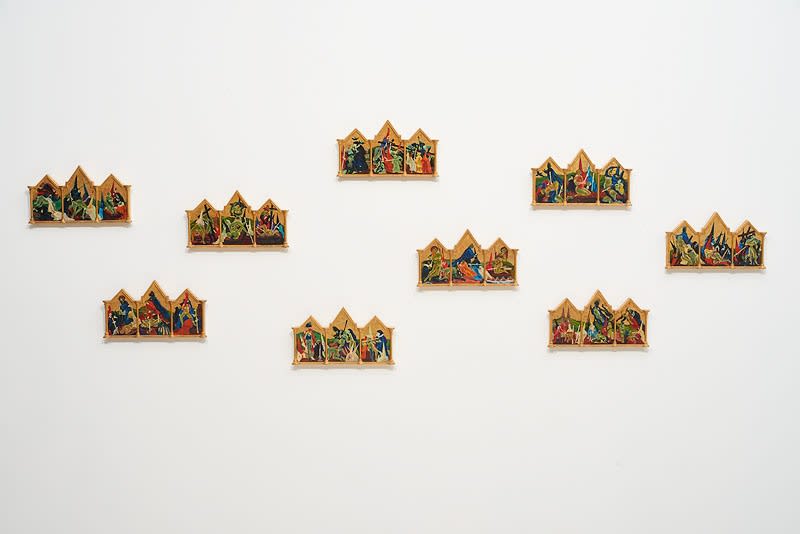Masami Teraoka| Masami Teraoka’s Apocalyptic Theater / Pussy Riot, the Pope, Putin, and Peach Boy
January 9 – February 20, 2016
San Francisco, CA: Catharine Clark Gallery presents, Masami Teraoka’s Apocalyptic Theater/Pussy Riot, The Pope, Putin, and Peach Boy, a solo exhibition of new and selected work by Masami Teraoka. On view January 9 – February 20, 2016, the exhibit features four large triptych paintings more than a decade in the making, in which Teraoka continues his brazen portrayals of abusive power. While shocking and lurid, the exhibit (titled after the villains and heroes in the artist’s theatrical renderings) is also sardonic and impishly humorous: power changes hands, traditional roles reverse, and fates are reimagined. Mirroring the triptych construction of his paintings, Teraoka’s tableaus literally and figuratively open the secretive and dark underworlds of institutional power to Teraoka’s singular brand of unabashed truth-telling, searing criticism, and playful ridicule. The artist will be present for the exhibition opening on Saturday, January 9, from 4 -6 pm.
Teraoka’s work in multi-frame panels, wrought in the style of Medieval and Renaissance religious triptychs, began in the early 1990s as a response to revelations of sexual abuse in the Catholic Church. Since then, Teraoka has used his stylistic transformation to evocatively explore topics ranging from the invasion of Iraq, to Karl Rove, to gender stereotypes. In his latest body of work, Teraoka draws on specific current events in which members of the music group Pussy Riot, The Pope, Vladimir Putin, and the geisha Momotarō play central roles. In Pussy Riot/Russian Orthodox Confessors, Teraoka references the band’s 2012 protest performance in Moscow’s Cathedral of Christ the Savior. Tried and imprisoned for ‘hooliganism,’ Pussy Riot drew world-wide attention for their caustic views of Vladimir Putin and the Catholic Church. Here, in Teraoka’s Kabuki-esque continuation of the narrative, Pussy Riot presides over the confessional of penitent priests, giving them, according to Teraoka, “a crash course in Sexuality 101,” which includes their participation in a jumping massage class, seen in the left panel. In each painting, absurdity abounds: Vladimir Putin wears a tutu, a Catholic cardinal is potty-training, and the Pope sports lingerie and high heels. Teraoka introduces the character of Geisha Momotarō (a currently practicing geisha, whose name means “Peach Boy” in Japanese) as a quintessential example of hybridity and role reversal. Momotarō appears as a victim, a feminist hero, and in her most transformative role, she occupies the role of Pope in The Cloisters / Geisha and Pope. Teraoka both beseeches viewers to acknowledge the real horrors wrought by unchecked power; and remind us that for revolution to occur, we must first imagine the ridiculous, and make it possible.



